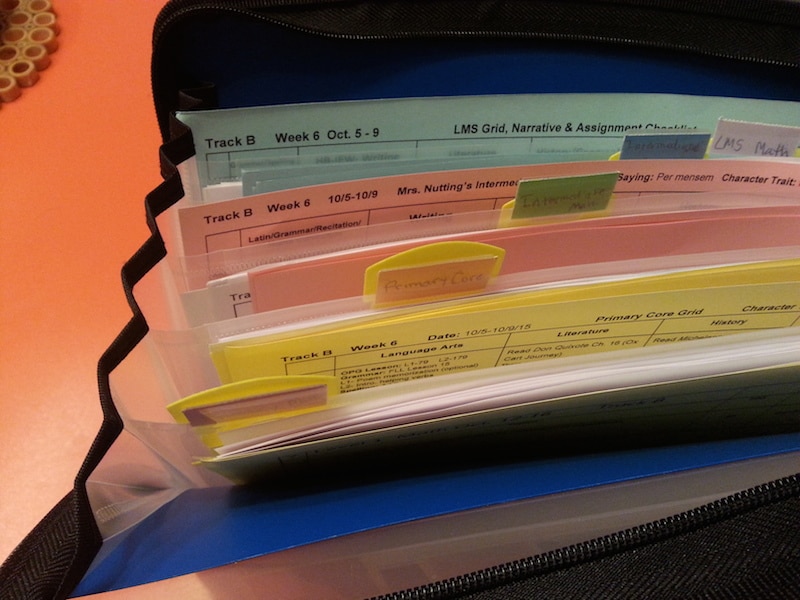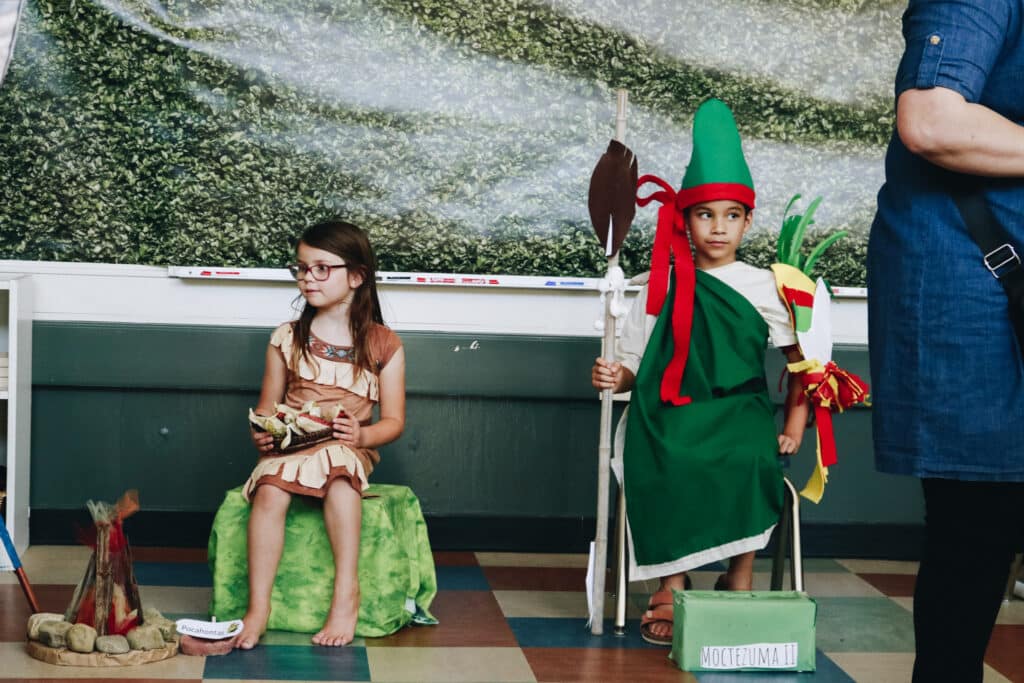{photo by Jenny Bischoff}
Since we are celebrating our tenth birthday this year, here at Down Home we are going with the “ten” theme, and will occasionally post “lists of ten” that relate to our SLOCA life, and specifically to our home days.
For our first “Tuesday Ten” list, we spoke with several families who have multiple kids in our program, and asked them for their favorite idea, resource, organization tool, or general advice for homeschooling multiple kids at the same time. We know this can be a huge challenge! While none of us do it perfectly, and each day (and each school year!) can present its own new struggles, we have all learned helpful strategies over the weeks, months, and years to help us lean in and enjoy the journey. In fact, there’s so much encouragement and inspiration right in our own SLOCA community, we couldn’t possibly contain it all in one list! Spend time in conversation with other parents and learn what is working for them. Our best resource is each other!
But here are ten things to get us started. Whether you’re new to the homeschooling piece this year, or you’ve been at this for awhile, we can all glean something from the following suggestions. We took each response, grouped them by topic, and listed them anonymously. Thank you to everyone who contributed!
Ten Tips for Homeschooling Multiple Kids:
 1. We can do hard things. One thing at a time.
1. We can do hard things. One thing at a time.
- Homeschooling is hard. So when you find yourself thinking “Wow, this is hard!” that’s because it is. It’s healthy to recognize and admit this! And when there are multiple kids in the mix, home days can feel a lot like trying to keep all the plates spinning. Around our house we love (or at least I love) the phrase “we can do hard things” and I say it almost daily, to myself or to the kids – often both. It can be very freeing to just acknowledge that this path isn’t an easy one, but it’s what we’ve chosen, and it’s so worth it, and we can do hard things.
- Approach each day independently of all others. We “eat the elephant one bite at at time.” How do you eat an elephant? It’s overwhelming to think about it as a whole, but… one bite at a time seems to work. Same thing with homeschool years – broken down into trimesters, months, days, or even subjects per day, it’s doable.
2. Be present.
- I know I can’t do it all, so I have learned to prioritize. My house isn’t nearly as clean as it used to be and our meals are much more simple, but this allows me to be more present with my children on our home days.
3. Prepare for the week ahead.
- My experience has shown that reading the grid ahead of time and making note of anything tricky ahead of time helps tremendously. Also, if you plan to do the subjects that only take 20 minutes first, then they don't slip through the cracks as easily. I certainly don't follow this advice all the time, but when I do, our homeschool day goes so much smoother!
- I feel more organized when I am prepared. I read the updates, read all the grids and narratives twice—quick scan before Monday so I know what everyone needs to bring to school and then a slow and careful read during Monday so I can prepare for the week. I photocopy Mental Math pages and have manipulatives ready to go; I read the HIG and prepare to teach the next day’s lesson; I make sure all of our reading material is easily accessible and sometimes, I even mark the pages. If I’m really on my game, I’ll even prepare some extra activities for my Jr. Kinder student so he isn’t left to his own devices for so long. I haven’t always done this and I’d be lying if I said I did this every week, but I notice a marked difference in our days when I do. I consider school at home as a part-time job.
4. About keeping all the grids straight… Here are couple of methods to consider:
 An ongoing challenge for me has been keeping all the grids straight. I have tried clip boards, binders, piles, and stacks. None of those have worked quite right and I am usually fumbling with papers trying to figure out what goes where. This year I have tried printing out each grid on a separate color paper. My daughter is pink, my boys are yellow and blue. I keep all the grids in a zippered file organizer with 6 tabs. Each child has a section for math and core. Work samples slip easily in behind the grids and are ready for progress reports. I keep extra pencils, a red pen, a glue stick, scissors, extra paper, and a tiny pack of tissues for the inevitable tears in there as well. I can quickly zip up my organizer and take school outside, to the car, out to breakfast (we love to get math done at Coco's) or anywhere.
An ongoing challenge for me has been keeping all the grids straight. I have tried clip boards, binders, piles, and stacks. None of those have worked quite right and I am usually fumbling with papers trying to figure out what goes where. This year I have tried printing out each grid on a separate color paper. My daughter is pink, my boys are yellow and blue. I keep all the grids in a zippered file organizer with 6 tabs. Each child has a section for math and core. Work samples slip easily in behind the grids and are ready for progress reports. I keep extra pencils, a red pen, a glue stick, scissors, extra paper, and a tiny pack of tissues for the inevitable tears in there as well. I can quickly zip up my organizer and take school outside, to the car, out to breakfast (we love to get math done at Coco's) or anywhere.
- I use a different colored clip board for each of my three kids to keep track of their current week's grids and notes as well as assignments/poems/in-class work that “lingers” longer than the current week. These clipboards are where I also keep a copy of the current trimester's History/Literature reading flow chart for each of their levels, notes I want to remember for their progress reports, or anything else that pertains specifically to that child. Since these clipboards are easily portable, I can take them with me to doctor's appointments, sports practices, or wherever I might have a minute to review (again) what's going on for the week. And if you're like me, those grids need multiple read-throughs to get it all straight!
5. Encourage independence early on.
- This wasn't as apparent until I had two kids in two different levels, and then it became an absolute necessity when I eventually had three kids in three different levels. Helping my primary student become oriented to the grid and help read its assignments was the first step. When my children reached Intermediate (3rd grade), I copied the grid for them and helped them learn how to read and refer to it every school day and keep it filed in their “BOB”. In 4th grade, I copied both the grid and the narrative portion for them and they were expected to glean from both parts. I was still the “director”, but they were my “assistants”. By LMS, I'm still the one printing the grids and narratives/attachments but my students have a fairly firm grasp on using them independently. We make notes on them together at the beginning of the week to keep us in sync. My UMS student is now expected to print out all her own grids, narratives and attachments and use them to work entirely independently, except when assistance is initiated by her. I still print myself a copy of her grids for my reference but to be honest, I only glance at them because my UMS student is now telling ME what's due and when!
6. If a schedule doesn’t work for you, try routines.
- Having a schedule can be a life-saver for some families, and if you are able to stick to one and it works for you, keep at it! As much as I would love to have a printed schedule on our home white board and follow it as dutifully as a classroom teacher would, this doesn’t work for us and inevitably ends in frustration for the kids and unmet expectations on my part! We have been trying to stick with routines instead – regular, habitual procedures rather than a time-based plan. We don’t necessarily do everything in the same order every day, but we have general guidelines, like what happens right after breakfast, what the kids do together, what we try to accomplish before our first break, before lunch, etc. I have “chunks” that I know can be done at the same time – one child working with me while another is working independently.
- I try to order our day so that my LMS student is working independently while my primary is working with me. In a sense, I’m meshing the two grids into one to make the day flow smoother. I also have worked at teaching my preschooler to have his own quiet time in his room. I started out with just a few minutes and worked our way up to an hour. This has made a huge different in having uninterrupted time for the school aged boys. Another thing I have added to our day this year is fixed blocks of time for certain subjects (example would be math and IEW/writing get 45 minutes). An example…for my LMS student, math is mostly an independent subject for him, so he knows that if he finishes early, there are timed math sheets, math games or mental math practice he can pull out if there is still time left within this allotted time. This has helped me greatly because it keeps this 45 minute block uninterrupted for my primary student that I’m working with.
- My best “multiple kid” strategy is to start with whatever they all have in common. If they all need to hear certain chapters from a book, even if they have different deliverables, I start there. For example, I’ll do the reading (Leonardo, Michelangelo, Don Quixote, etc.) while they eat breakfast, or just after breakfast (I like to stun them early in the day before they can formulate arguments or come up with alternative ways to spend our day). Then I can help the little guys with their dictation, which will eventually lead to copywork, while my older student gets a head start on his narrative, etc.
7. Everyone gets a do-over.
- I am a big believer in STARTING OVER. Especially on those days when everyone seems to have woken up on the super cranky side of their bunk bed. Everyone stop. Go to your rooms, and come back out. Everyone gets a do-over. I feel like that is an effective way for me to clear whatever dark cloud has parked over our homeschool day, and it helps us get the most of our day.
 8. Focus on relationships.
8. Focus on relationships.
- Even though we are with our kids a lot, and we definitely enjoy the family togetherness that SLOCA allows, I don’t want the “business side” of homeschooling to be considered our only “family time.” We still need to have fun together, and set aside time just to be together and enjoy each other. This does happen organically throughout our home days, but I’ve found it also creates more joy in the whole journey if we take time to keep our relationships healthy. My husband and I need a regular date night, we all look forward to family fun night, and each child needs to know they can have my undivided attention to just sit and talk if they need to. Keeping the bonds between us strong translates into more peaceful and meaningful home school days. And when there is conflict, having that relational foundation makes us want to work through the struggles, rather than ignore the issue.
9. Cling to what you love.
- I love reading aloud to my kids—the history, the literature, an outside family book—so I am sure to include that in our day. I’ve found if I include something that I really enjoy, it makes some of the other less enjoyable parts more manageable. Moms of multiples and littles and not-so-independent-students-yet, know that your family is growing and changing! How things look today, is not what they’ll look like next year or in two years. The kids grow more independent through the years so that eventually, you are checking in with them and helping as needed; the toddlers grow out of their phases, too. It’s a journey and definitely look for joy along the way!
10. Be grateful, even for the disasters! It’s a worthy struggle every day.
There’s so much more that could be said, but this is a great list to ponder. Let’s keep the advice and encouragement going – please leave a comment below to add to this list or respond to it!











